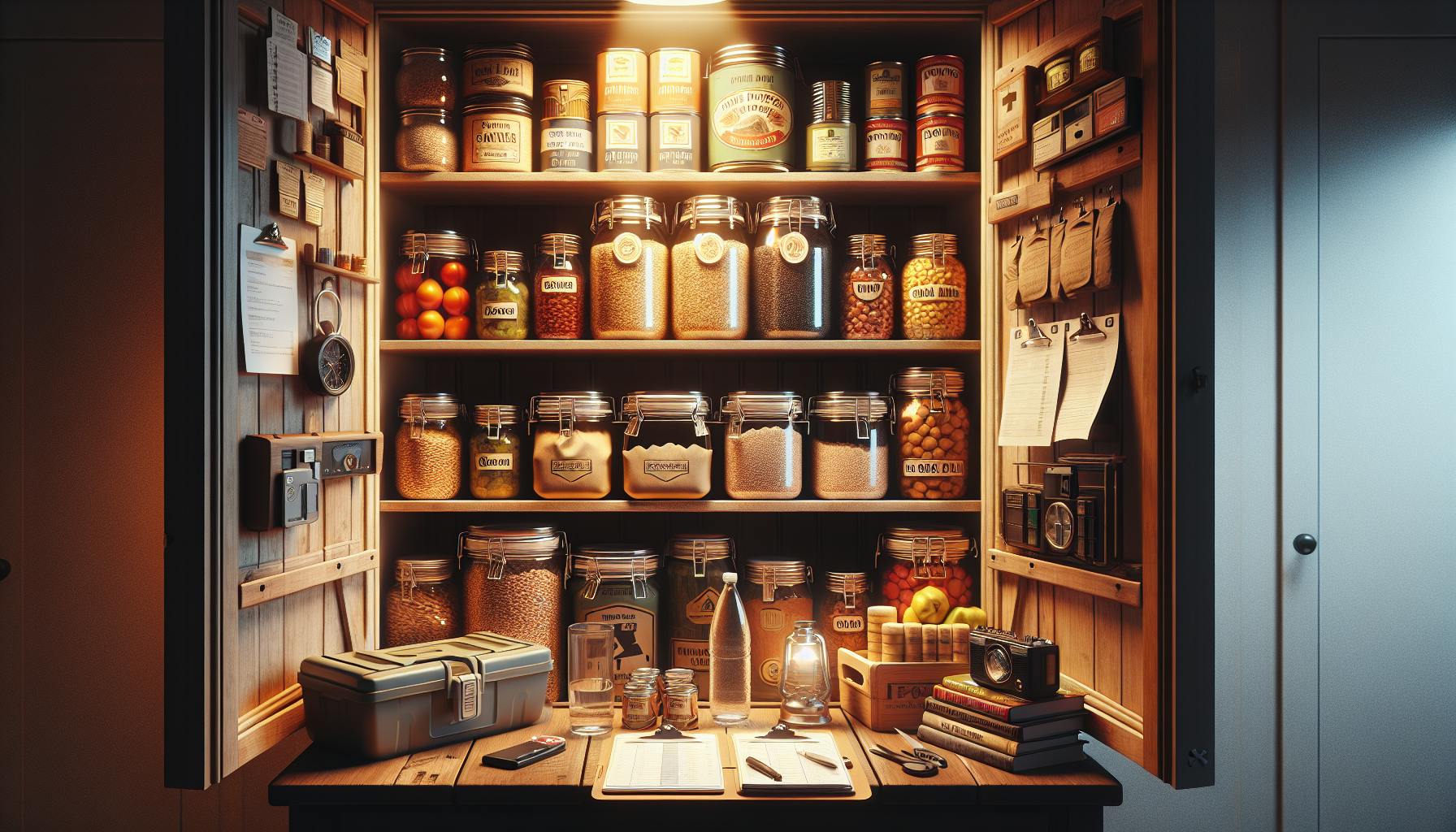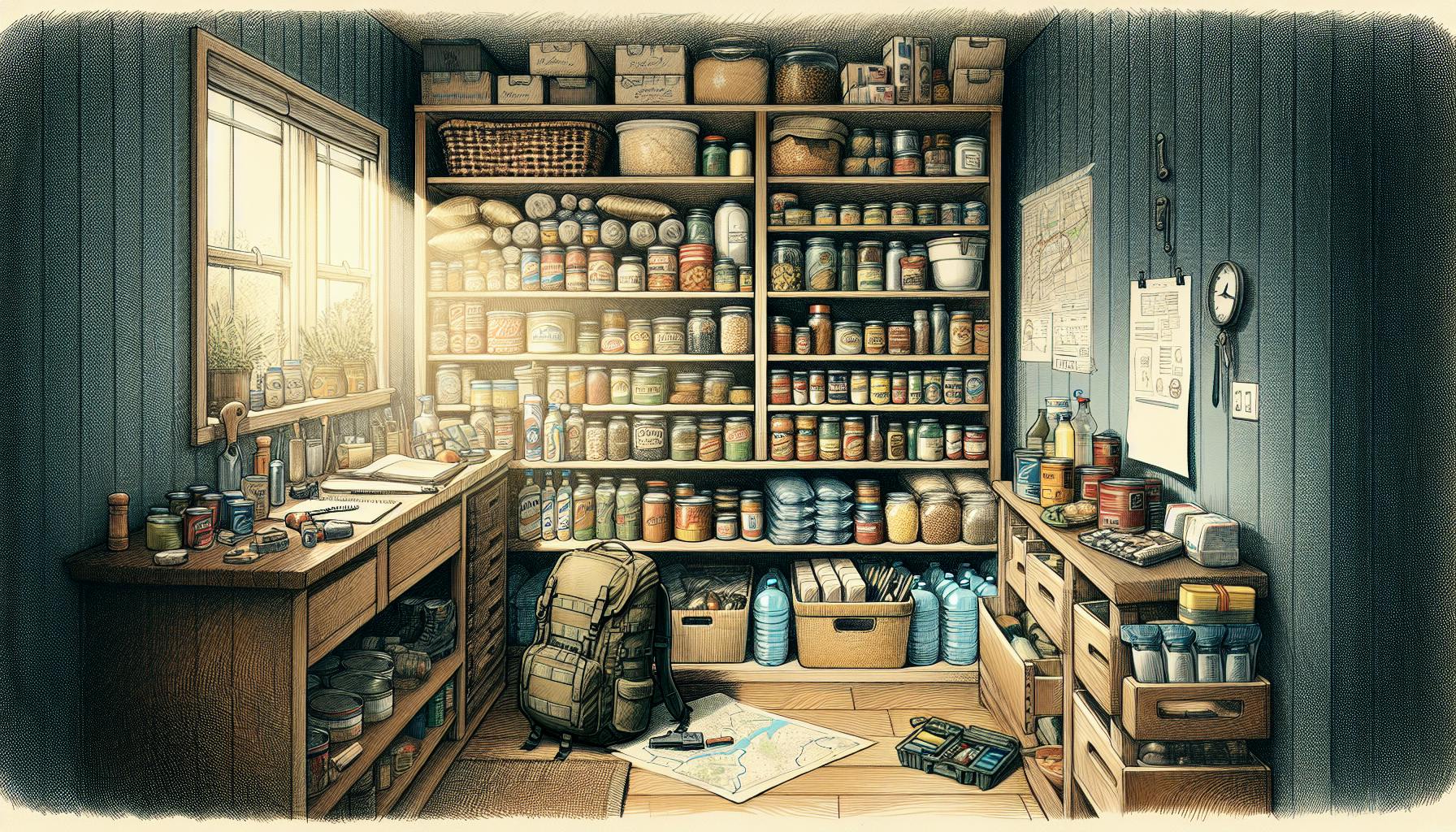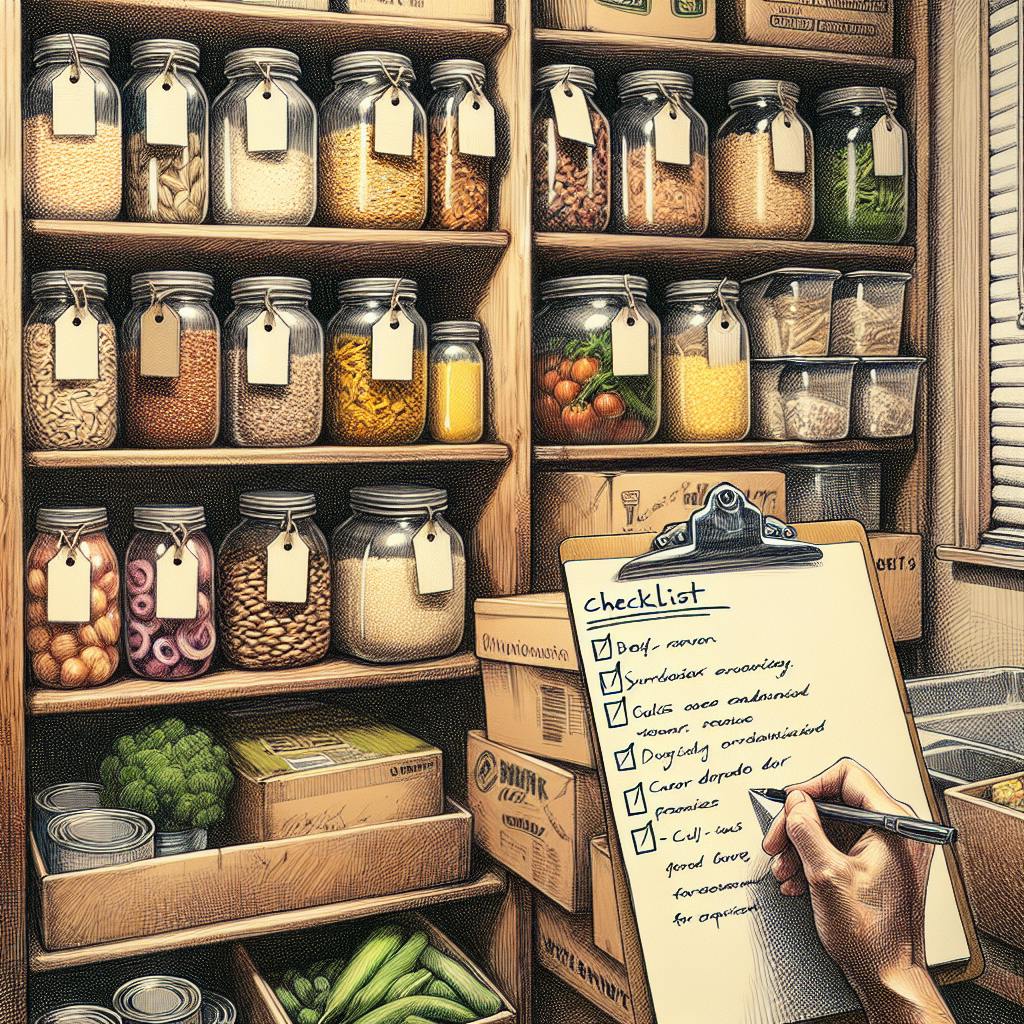Making fire in survival situations can be extremely challenging without the right materials. Most people would agree that having a reliable fire starting aid like char cloth is essential.
With some basic supplies and a simple process, you can easily make your own long-lasting char cloth to help start fires in any conditions.
In this beginner's guide, you'll learn what char cloth is, why it's so useful for firelighting, what materials to use, and a step-by-step method to make high quality char cloth for your emergency kit.
Introduction to Char Cloth
Char cloth is a type of charred fabric that serves as an essential fire-starting tinder in emergency preparedness kits and survival situations. This beginner's guide will cover what char cloth is, why it's important for firelighting, instructions for making it, and the science behind how it works.
Understanding Char Cloth Meaning and Function
The term "char cloth" refers to small pieces of natural fabric, such as cotton, linen, or jute, that have been transformed into charcoal through the process of pyrolysis. This removes moisture and volatiles from the fabric, leaving behind a lightweight blackened cloth that can be easily ignited at lower temperatures.
Char cloth acts as an intermediate tinder, helping to extend the ignition time of sparks hitting the cloth. This gives sparks more time to catch on dry kindling. In survival situations without matches or lighters, char cloth enables starting fires more reliably using primitive friction fire methods.
The Role of Char Cloth in Firelighting
Char cloth serves a vital role in firelighting by acting as a "bridge" between the initial spark and dry tinder. When a spark from flint strikes char cloth, the cloth begins to smolder without bursting into flames. This smoldering phase releases gases that ignite when they contact oxygen.
The smoldering char cloth allows the spark to hold long enough to light tinder placed next to it. Without char cloth, sparks tend to fizzle out too quickly before igniting other tinder. This makes char cloth an essential fire-starting aid for survival kits and outdoor activities like camping.
Selecting Suitable Materials: Cotton, Linen, and Jute
To make char cloth, you'll need 100% natural fabric scraps, preferably cotton, linen or jute. Avoid synthetic fabrics as they can release toxic fumes when burned. Other required materials include:
- A heat-safe container like a tin or steel container with a tight-fitting lid
- Heat source - campfire coals, grill, or oven
Cotton produces very good char cloth due to its high cellulose fiber content. Linen and jute also work well. The fabric should be cut into pieces roughly the size of a playing card before charring.
The Science Behind Char Cloth: Pyrolysis and Thermochemical Decomposition
The pyrolysis process transforms cellulose fibers in natural fabrics into charcoal, which ignites more readily than raw fabric. Pyrolysis involves heating the fabric in an oxygen-limited environment, triggering a thermochemical decomposition reaction.
More specifically, heat breaks down hydrogen and oxygen compounds in the fabric. This releases moisture and volatile gases, leaving behind the carbon structure in a charred, blackened state. The charred carbon ignites at lower temperatures, making it the ideal starter fuel for fires.
Understanding the science behind char cloth helps illuminate why it works so effectively as a firelighting aid. Taking advantage of pyrolysis allows survivalists and preppers to make fire-starting tinder from ordinary fabric items.
How do you make charcloth?
Making charcloth is a straightforward process that only requires a few simple materials. Here is a step-by-step guide:
What You Need
- A metal container with a lid, like an altoids tin or empty soup can
- Small pieces of natural fabric such as cotton, linen, or jute
- A heat source like a campfire, grill, or oven
Steps
- Cut or tear your chosen fabric into pieces that will fit inside your metal container. Charcloth works best when made from lightweight, porous materials like cotton or linen.
- Place the pieces of fabric into the container, leaving the lid slightly ajar. You want the container to be almost airtight, but allow a tiny bit of oxygen inside.
- Set the container on or next to a consistent heat source. This allows the charcloth to undergo pyrolysis, slowly driving off water and volatile gases.
- Heat for at least 30 minutes. Monitor the container closely to ensure even heating. The fabric inside will first turn brown, then black.
- Allow the container to fully cool before opening. The fabric should now be lightweight and brittle - your charcloth is complete!
Making charcloth takes patience, but is incredibly useful for emergency firestarting. With proper storage, charcloth can work for years. Start small by making enough for your bug out bag, then scale up as needed.
What is the best material for char cloth?
Char cloth is typically made from natural plant fibers like cotton or linen. These materials are ideal for making char cloth because:
-
Cotton and linen are made of cellulose, which undergoes pyrolysis when heated in a low oxygen environment to produce charcoal - the key component of char cloth. Materials like polyester will simply melt.
-
Fabrics like cotton and linen are very porous, which allows oxygen to escape easily during the charring process. This helps prevent combustion.
-
Cotton and linen ignite at relatively high temperatures around 400-500°F. This allows the fabrics to char fully before burning.
-
These fabrics are readily available and inexpensive. An old 100% cotton t-shirt makes great char cloth.
Some specific materials that work very well for making char cloth include:
-
Cotton - One of the most common and effective materials. Cotton ignites at 420°F. An old cotton t-shirt or scrap fabric works perfectly.
-
Linen - Linen begins to char at 390°F, so it converts to char cloth very easily. Linen is a bit less common than cotton but still readily accessible.
-
Jute - A very porous fiber that creates an excellent char material. Jute ignites at 455°F. Jute twine, rope or burlap can be used.
The key is to use a natural plant fiber that is 100% cotton, linen or jute. Synthetic fibers will simply melt. While materials like wool and leather will char, they do not make good char cloth. Stick with plant-based cellulose fibers for best results.
sbb-itb-b932644
Is denim good for char cloth?
Denim from blue jeans or other heavy cotton fabrics can make excellent char cloth. The key requirement is that the fabric contains 100% cotton. This allows the cloth to carbonize properly when heated in the absence of oxygen.
Some key advantages of using denim for char cloth include:
-
Sturdiness - Denim is very durable and less prone to breaking apart during the charring process compared to lighter fabrics. This allows you to reuse the char cloth multiple times before it disintegrates.
-
Cotton composition - Denim's high cotton content, often close to 100%, provides the ideal cellulose material to produce charcoal through pyrolysis.
-
Availability - Denim is ubiquitous and easy to find. Most people have old jeans or other cotton clothing items laying around that would otherwise be thrown out.
The weight and weave density of denim makes it slower to ignite initially compared to lighter fabrics like cotton balls. However, once lit, denim char cloth will smolder for a reasonably long time, making it very useful as a fire-starting tinder.
Just make sure to avoid denim that contains spandex or other synthetic fibers. Stick to all-cotton heavy denim items for best results. Overall, denim makes an economical, widely available, and high performance char cloth option.
How to Make Char Cloth
Making char cloth is a simple process that only requires a few basic materials. It can be an extremely useful survival skill for emergency fire starting.
Preparing Your Char Cloth Tin and Tinder Box
Start by gathering small scraps of natural fabric like cotton, linen or jute. Cut or tear the fabric into pieces 1-2 inches wide. Place the scraps flat in the bottom of a small, heat-safe container like an altoids tin. Avoid overlapping the pieces. Close the lid tightly so limited oxygen can enter during heating. This tin will serve as your tinder box for storing the finished char cloth.
Heating the Container: Campfire, Grill, or Oven
Place the closed tin on top of hot coals from a campfire or grill. You can also use a conventional oven set to 300°F. The scraps will begin pyrolyzing into char cloth after 10-20 minutes when you hear the lid start to rattle from gasses escaping.
Cooling and Inspecting: How Long Does it Take to Make Char Cloth
Once the rattling stops, remove the tin from the heat source using tongs if needed. Set aside and allow it to fully cool before opening - introducing oxygen at high temperatures could cause ignition. Cooling generally takes 30-60 minutes.
Evaluating the Finished Product: Identifying Properly Made Char Cloth
Carefully open the tin and inspect the char cloth. It should be lightweight, brittle and blackened while still retaining the shape of the original fabric. If it has turned to ash or crumbles when touched, it was overheated. If it remains fabric-like, it needs more time to pyrolyze.
Alternative Methods: How to Make Char Cloth in the Oven
While using a campfire or grill is most common, char cloth can also be safely made in a conventional oven. Set to 300°F and place the closed tin on a baking sheet. Monitor it closely, removing once the lid rattles. This allows careful temperature control compared to an open fire.
Practical Uses of Char Cloth in Fire Starting
To use char cloth for fire starting, hold it next to an ember or spark so that is slowly ignites without bursting into flames. Then place it in a tinder bundle and gently blow to build the ember into flames.
Creating Sparks with Flint and Steel
When striking flint and steel together to create sparks, hold a piece of char cloth next to the sparks and gently blow on any glowing embers that catch. The char cloth will help nurture the spark into a small ember that can be transferred to tinder.
Integrating Char Cloth with Primitive Friction Fire Methods
For hand drill, bow drill, and fire plow methods, place a piece of char cloth in the tinder bundle to catch the initial coal formed through friction. The porous nature of char cloth allows it to cradle the coal. Gently blow to build it into a flame.
Char Cloth Fire: Building a Sustainable Flame
Once an ember has caught on the char cloth, transfer it to a bird's nest of fine tinder material. Add small kindling while continuing to gently blow until the tinder ignites. Gradually add larger kindling as the fire grows. The char cloth ember helps sustain the flame as the fire establishes.
Storing Char Cloth: Keeping it Dry and Ready for Emergency Use
Wrap char cloth pieces in wax paper along with other compact tinders like dryer lint and fine wood shavings. Store these emergency fire starters in a watertight container in your survival kit or bug out bag. The char cloth will retain its pyrolyzed cellular structure to be ready to catch a spark when needed.
Char Cloth Alternatives: Exploring Other Firelighting Materials
While char cloth is an preferred tinder, other historically used materials like true tinder fungus and more modern alternatives like petroleum-impregnated cotton can also effectively catch and nurture sparks in firelighting applications. Understanding various options allows flexibility depending on available resources.
Conclusion: Mastering the Art of Char Cloth for Survival
Knowing how to make and utilize char cloth provides a reliable fire-starting ability in any situation. Keep some on hand for your emergency kits, and learn techniques like flint & steel that allow you to fully leverage char cloth’s fire catching properties.
Recap of Char Cloth's Significance in Firelighting
Char cloth is a type of pyrolized fabric that ignites at lower temperatures, making fire starting possible even with primitive methods. Its uses include catching sparks, nurturing embers, and as a prepared fire starter. Char cloth acts as an essential tinder when attempting to start a fire using traditional techniques like flint and steel, fire pistons, or friction methods. By catching and holding a spark, the char cloth enables enough heat buildup to ignite the tinder and start your fire.
Reflecting on the Fire Triangle: Oxygen, Heat, and Fuel
Understanding the fire triangle is crucial to effective fire starting. Char cloth serves as the fuel that, when combined with heat from sparks or embers and the oxygen in the air, can create fire even under challenging conditions. Having a good fuel source in the form of char cloth allows you to concentrate efforts on directing sparks and embers onto it in order to generate flames.
The Importance of Practice and Preparedness
Regular practice with char cloth and fire-starting techniques ensures readiness for survival situations. Familiarity with the material's properties and behavior under various conditions can make all the difference when it matters most. Test your skills ahead of time and keep ample char cloth stocked in your emergency kits. With preparation and experience using char cloth, you'll have confidence in your ability to start a fire when you need it the most.


